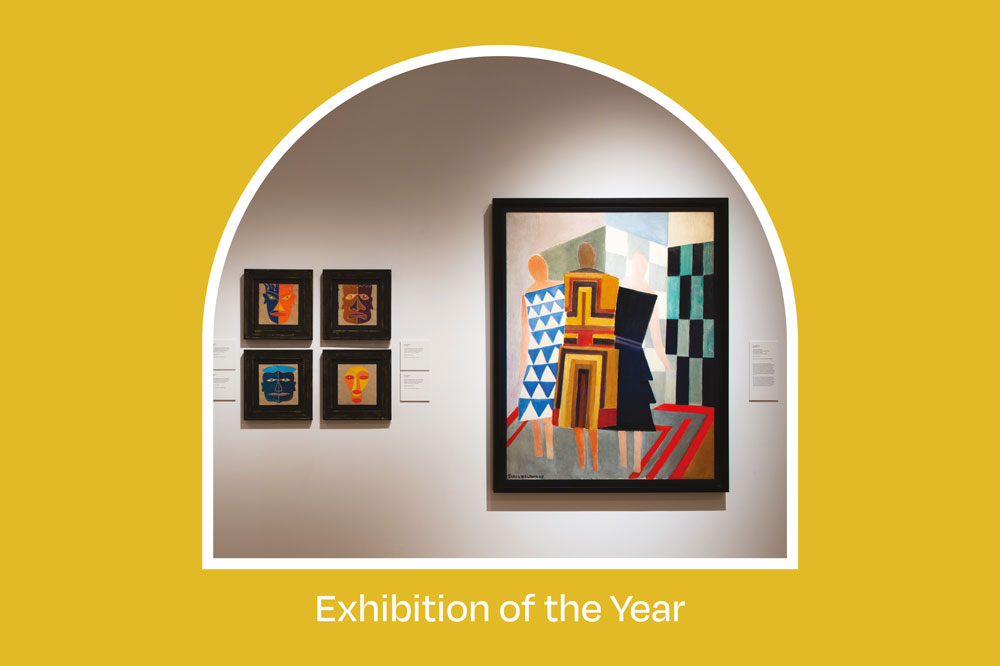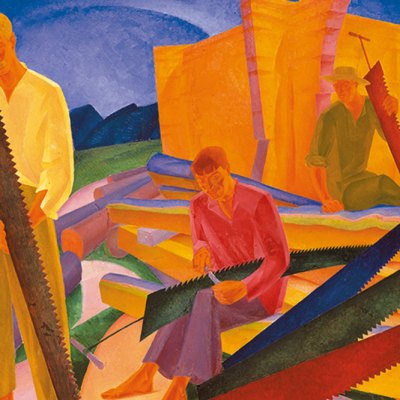In the Eye of the Storm: Modernism in Ukraine, 1900–1930s
Museo Nacional Thyssen-Bornemisza, Madrid
29 November 2022–2 May
International loan exhibitions are usually years in the making, with museum schedules set in stone. However, in just a few months of frenetic activity after the Russian invasion of Ukraine in February 2022, this touring show and accompanying 248-page book were unveiled at the Museo Nacional Thyssen-Bornemisza in Madrid. The lion’s share of its 70 exhibits had left Kyiv just hours before the most intensive aerial bombardment of the city to date.
This exhibition could never have happened without the tireless lobbying, iron will and impressive contacts of the activist Francesca Thyssen-Bornemisza, the art historian and curator Konstantin Akinsha who had long prepared a text for such a show and indeed suggested it, or Yuliia Lytvynets and her team at the National Art Museum of Ukraine who had spent the last eight years researching works of art previously hidden in the vaults of the museum, owing to their perceived ‘counter-revolutionary formalist methods’. The museum in Madrid was an appropriate first venue: Baron Thyssen-Bornemisza had been a pioneering collector of art from this region, and sent masterpieces from his Old Masters collection to an appreciative Kyiv in 1983.
At stake was not only the preservation of Ukraine’s material cultural heritage but also the national identity that it represents. The country had already suffered significant losses of literature and art during the Soviet purges of so-called bourgeois nationalism that had begun in 1931 after a period of relative freedom and bold artistic experimentation, not least in theatre and cinema. More was subsequently ‘lost’ when cosmopolitan but Ukrainian-born or trained artists such as Davyd Burliuk, Alexandra Exter and Kazymyr Malevych came to be subsumed into the narrative of the Russian avant-garde.
This show offered not so much revisionism as a measure of clarity in a complex picture. What Akinsha called a ‘polyphony of identities’ was also complemented by a ‘polyphony of style’. Some modernists developed versions of international trends such as cubism, Futurism, constructivism and the Neue Sachlichkeit. Others invented their own. The quest for a recognisable national style also saw artists turning to folk art and ornament – and to Byzantine mosaics and frescoes – for inspiration.
For most visitors, this was a show of discoveries. Perhaps none was more memorable than Oleksandr Bohomazov, an artist who fused cubism and Futurism, already hailed as the unknown genius of the Ukrainian avant-garde.
Photo: courtesy Museo Thyssen-Bornemisza, Madrid

Susan Moore is associate editor of Apollo.




